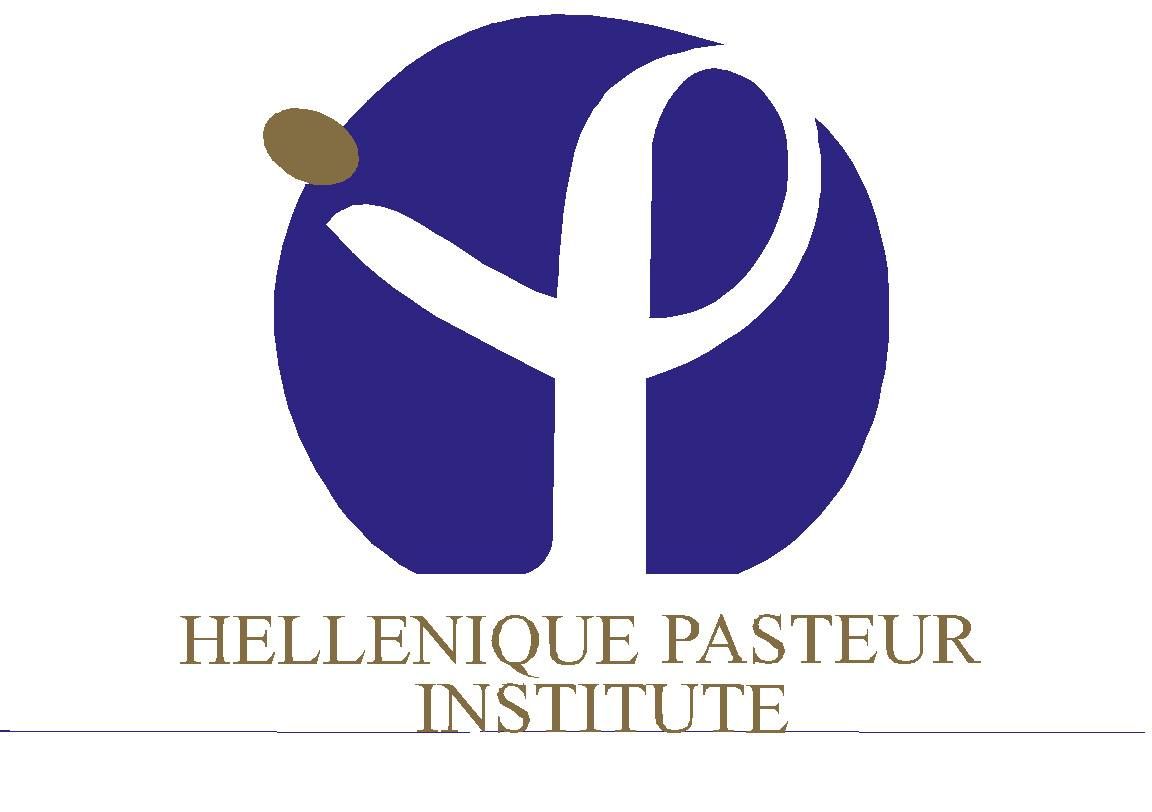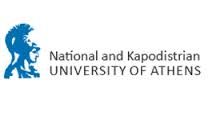预约演示
更新于:2025-05-07

Hellenic Pasteur Institute
更新于:2025-05-07
概览
标签
肿瘤
小分子化药
关联
2
项与 Hellenic Pasteur Institute 相关的药物靶点 |
作用机制 DYRK1B inhibitors |
原研机构 |
在研适应症 |
非在研适应症- |
最高研发阶段药物发现 |
首次获批国家/地区- |
首次获批日期- |
作用机制 AChR拮抗剂 |
在研机构- |
在研适应症- |
非在研适应症 |
最高研发阶段无进展 |
首次获批国家/地区- |
首次获批日期- |
1
项与 Hellenic Pasteur Institute 相关的临床试验NCT04723771
Influenza Vaccination Effectiveness of a Quadrivalent Inactivated Vaccine in Pregnant Women and Young Infants (Aged 6 Months and Below) During Influenza Season 2019/2020
Influenza is associated with an increased risk for serious illness, hospitalization and death in pregnant women and young infants. The investigators estimated the effectiveness of a quadrivalent inactivated influenza vaccine (QIV) in pregnant women and their infants in 2019-2020 influenza season. Women were activelly followed during the influenza season on a weekly basis through telephone call in order to collect data about the onset of fever and/or respiratory symptoms by them or their young infants. Polymerase chain reaction testing in pharyngeal samples was offered to pregnant women and infants with influenza-like illness (ILI). A total of 636 pregnant women and 474 infants were studied. A Bayesian beta-binomial model was used.
开始日期2019-09-01 |
申办/合作机构 |
100 项与 Hellenic Pasteur Institute 相关的临床结果
登录后查看更多信息
0 项与 Hellenic Pasteur Institute 相关的专利(医药)
登录后查看更多信息
812
项与 Hellenic Pasteur Institute 相关的文献(医药)2025-12-01·Journal of Clinical Immunology
Levels of Natural Antibodies Before and After Immunoglobulin Replacement Treatment Affect the Clinical Phenotype in Common Variable Immunodeficiency
Article
作者: Sarrigeorgiou, Ioannis ; Kalala, Fani ; Tsinti, Gerasimina ; Speletas, Matthaios ; Germenis, Anastasios ; Lymberi, Peggy
2025-05-13·Blood Advances
Cellular and biochemical heterogeneity contributes to the phenotypic diversity of transfusion-dependent β-thalassemia
Article
作者: Rouvela, Stella ; Kostopoulos, Ioannis V. ; Nomikou, Efrosyni ; Thomaidis, Nikolaos ; Pavlou, Efthymia ; Theocharaki, Konstantina ; Voskaridou, Ersi ; Velentzas, Athanassios D. ; Barla, Ioanna ; Vassilaki, Niki ; Tzafa, Georgia ; Aggeli, Ioanna-Katerina ; Tsitsilonis, Ourania ; Delicou, Sophia ; Politou, Marianna ; Gikas, Evangelos ; Tzounakas, Vassilis L. ; Anastasiadi, Alkmini T. ; Kazolia, Evgenia ; Xydaki, Aikaterini ; Gousdovas, Theodore ; Komninaka, Veroniki ; Simantiris, Nikolaos ; Papageorgiou, Efstathia ; Antonelou, Marianna H. ; Mpekoulis, George
2025-01-01·Cell Reports
G6PD deficiency triggers dopamine loss and the initiation of Parkinson’s disease pathogenesis
Article
作者: Lu, Ping ; Figueroa, Gerardo Balderas ; Panchal, Rachi ; Thevasenan, Sharanya ; Coackley, Carla L ; Akrioti, Elissavet-Kalliopi ; Camargo, Suelen ; Stykel, Morgan G ; So, Raphaella W L ; Akhtar, Tariq A ; Stuart, Erica ; Joseph, Jeffery T ; Taoufik, Era ; Haji-Ghassemi, Omid ; Soubeyrand, Eric ; Ryan, Scott D ; Siripala, Shehani V ; Watts, Joel C
4
项与 Hellenic Pasteur Institute 相关的新闻(医药)2024-10-24
Data from Animal Model Study Demonstrate XPro™ converts microglia from a demyelinating cell to a remyelinating cell Multi-year study published has implications for many CNS diseases including Alzheimer’s Boca Raton, Florida, Oct. 24, 2024 (GLOBE NEWSWIRE) -- INmune Bio, Inc. (NASDAQ: INMB) (the “Company”), a clinical-stage inflammation and immunology company focused on developing treatments that harness the patient’s innate immune system to fight disease, announces the publication of a seminal paper in the journal Cell Reports that demonstrates XPro1595 promotes remyelination in an animal model of demyelinating disease. The study, Microglia Regulate Cortical Remyelination via ΤNFR1-Dependent Phenotypic Polarization, was performed under the direction of Leslie Probert PhD, Head of Immunology at the Hellenic Pasteur Institute in Athens Greece, and is the culmination of several years of work supported by EU research grants. Myelin is necessary for fast and efficient communication between neurons. Loss of myelin compromises neuron function and communication and is a key step in the neurodegenerative process of many CNS diseases, including Alzheimer’s Disease. “Activated microglia play a central role in both demyelination and remyelination,” said Dr. Probert, senior author of the publication. “Our data identify solTNF as a critical cytokine checkpoint that converts microglia from a reparative, remyelinating cell to a damaging, demyelinating cell. These data suggest that blocking soluble TNF is a promising strategy for treating demyelinating diseases.” “Demyelination is a core mechanism of neurodegeneration that has been overlooked in Alzheimer's disease, despite the evidence that it’s a critical element of the disease's pathology,” said RJ Tesi MD, CEO of INmune Bio. “These new data further support the potential for XPro1595 in neurodegenerative diseases by restoring glia function to improve key components of neurodegeneration at multiple levels, including restoration of synaptic function, remyelination, and ceasing cell loss.” INmune anticipates reporting top-line cognitive results of an ongoing blinded randomized Phase II in Early AD patients in the first half of 2025. About Demyelination in Alzheimer's Disease Research shows that demyelination occurs in various brain regions critical for cognition in AD patients. This damage is often associated with the presence of amyloid-beta (Aβ) plaques, suggesting that myelin loss may precede or accompany the classic pathological changes seen in AD. Changes in myelin structure can be detected even before the onset of typical AD symptoms. Advanced imaging techniques have revealed alterations in myelin density and integrity in individuals at risk for AD, indicating that demyelination might serve as an early biomarker for the disease. The mechanisms underlying myelin damage in AD involve oligodendrocyte dysfunction, which can lead to the breakdown of myelin sheaths. This breakdown not only affects neuronal health but may also contribute to the accumulation of Aβ, creating a feedback loop that exacerbates both myelin loss and neurodegeneration. Studies utilizing techniques like myelin water fraction imaging have shown significant reductions in myelin integrity among individuals with mild cognitive impairment and dementia, reinforcing the notion that demyelination is prevalent in AD. About INmune Bio Inc. INmune Bio, Inc. is a publicly traded (NASDAQ: INMB), clinical-stage biotechnology company focused on developing treatments that target the innate immune system to fight disease. INmune Bio has two product platforms that are both in clinical trials: The Dominant-Negative Tumor Necrosis Factor (DN-TNF) product platform utilizes dominant-negative technology to selectively neutralize soluble TNF, a key driver of innate immune dysfunction and a mechanistic driver of many diseases. XPRO, the first of several DN-TNF products, is in clinical trials to determine if it can treat patients with Mild Alzheimer’s disease. Additional therapeutic indications including d treatment-resistant depression and oncology will be pursued when resources allow. The Natural Killer Cell Priming Platform includes INKmune™, a therapy developed to prime a patient’s NK cells to treat patients with cancer. INKmune uses a precision medicine approach for the treatment of a wide variety of hematologic and solid tumor malignancies. The INKmune trial is enrolling patients into a US Phase I/II trial in men with metastatic castrate resistant prostate cancer. To learn more, please visit www.inmunebio.com. Forward Looking Statements Clinical trials are in early stages and there is no assurance that any specific outcome will be achieved. Any statements contained in this press release that do not describe historical facts may constitute forward-looking statements as that term is defined in the Private Securities Litigation Reform Act of 1995. Any statements contained in this press release that do not describe historical facts may constitute forward-looking statements as that term is defined in the Private Securities Litigation Reform Act of 1995. Any forward-looking statements contained herein are based on current expectations but are subject to a number of risks and uncertainties. Actual results and the timing of certain events and circumstances may differ materially from those described by the forward-looking statements as a result of these risks and uncertainties. INB03™, XPro1595, and INKmune™ are still in clinical trials or preparing to start clinical trials and have not been approved by the US Food and Drug Administration (FDA) or any regulatory body and there cannot be any assurance that they will be approved by the FDA or any regulatory body or that any specific results will be achieved. The factors that could cause actual future results to differ materially from current expectations include, but are not limited to, risks and uncertainties relating to the Company’s ability to produce more drug for clinical trials; the availability of substantial additional funding for the Company to continue its operations and to conduct research and development, clinical studies and future product commercialization; and, the Company’s business, research, product development, regulatory approval, marketing and distribution plans and strategies. These and other factors are identified and described in more detail in the Company’s filings with the Securities and Exchange Commission, including the Company’s Annual Report on Form 10-K, the Company’s Quarterly Reports on Form 10-Q and the Company’s Current Reports on Form 8-K. The Company assumes no obligation to update any forward-looking statements in order to reflect any event or circumstance that may arise after the date of this release. INmune Bio Contact: David Moss, CFO (858) 964-3720info@inmunebio.com Daniel CarlsonHead of Investor Relations(415) 509-4590dcarlson@inmunebio.com Investor Contact: Mike MoyerManaging Director – LifeSci Advisorsmmoyer@lifesciadvisors.com
临床2期免疫疗法
2022-06-03
Toleranzia AB (publ) ("Toleranzia" or the "Company") today announces that the results of preclinical studies with the Company's most advanced drug candidate TOL2, which is being developed for the autoimmune disease myasthenia gravis, have been published in the scientific journal Frontiers in Immunology. The study results show that intravenous treatment with TOL2 effectively and sustainably reduces all disease symptoms in a preclinical myasthenia gravis model. A comparative analysis also showed that the treatment effect of the drug candidate far exceeded that of two established treatments for myasthenia gravis.
Myasthenia gravis is a progressive autoimmune disease that occurs when the body mistakenly attacks and breaks down the acetylcholine receptors in the body's muscles. When the receptors are destroyed, signal transmission between the nervous system and the muscles is affected, and the patient's muscle function gradually deteriorates. In severe cases, the disease can lead to life-threatening respiratory muscle weakness. Current treatments are only symptomatic and the medical need for safe and effective therapies is therefore huge. Toleranzia is developing the drug candidate TOL2, which is a modified form of the acetylcholine receptor. By adding the modified form of the acetylcholine receptor, the patient's immune system is stimulated to re-tolerate the receptors and thus stop attacking them. In the current study, researchers administered TOL2 intravenously in an experimental autoimmune disease model of myasthenia gravis (EAMG) to investigate the effect on muscle strength, muscle levels of acetylcholine receptors and signal transduction. The study results showed that the therapy generated a normalization of all endpoints tested, with a robust and sustained reduction in disease symptoms over time as a result. Treatment response was evident in early as well as established and advanced disease. A comparative analysis also showed that Toleranzia's drug candidate provides a superior treatment effect compared to the two therapies that make up the current standard of care for myasthenia gravis. The study also documented a favorable safety profile of the drug candidate, in terms of good tolerability and absence of toxicity. "We are pleased that the positive research results for our drug candidate TOL2 have now been published in a reputable scientific journal. The fact that we see a therapeutic effect in this preclinical trial model even in the late stages of myasthenia gravis, when the condition is fully established and progressive, is crucial for TOL2 to be developed into a drug that meets the huge medical need that the affected patients still have. The study results provide an important basis for the planning of the clinical trial that we intend to initiate next year," says Charlotte Fribert, CEO, Toleranzia AB. The studies were conducted in collaboration with Toleranzia's research partners at the Hellenic Pasteur Institute, Greece, and Tzartos NeuroDiagnostic, Greece. The full article is available at the following link: research article. For further information, please contact: Charlotte Fribert – CEO, Toleranzia Tel: +46 763 19 98 98 Email: charlotte.fribert@toleranzia.com About Toleranzia AB (publ) Toleranzia AB (publ) develops drugs that harness the power of the immune system for the treatment of autoimmune orphan diseases. The drugs, which target the cause of the disease, can cure or significantly alleviate the disease and not, like current treatments, merely reduce the symptoms. They have the potential to be the first long-acting or curative therapies that act specifically on the underlying cause of the autoimmune orphan disease for which they are being developed. Toleranzia's shares are listed on the Nasdaq First North Growth Market and Mangold Fondkommission AB, 08-503 015 50, CA@mangold.se, is the Company's Certified Adviser.
临床结果临床研究
2022-05-10
Myasthenia gravis is an autoimmune disease caused by the immune system mistakenly attacking the receptors that control the body's muscles. The disease, which is progressive, can lead to a significant deterioration in the patient's mobility and can ultimately cause a life-threatening deterioration of the respiratory muscles. Today, only symptomatic treatments are available for the disease and there is a great medical need for new and better therapies and a better understanding of the basic mechanisms of the disease. Every five years, the world's leading scientists, physicians and drug developers gather to discuss the state of the art. Toleranzia's drug candidate TOL2 is being developed with the aim of becoming the first disease-modifying treatment for myasthenia gravis and the company's Chief Medical Officer, Vidar Wendel-Hansen, will attend the meeting in Miami to disseminate knowledge about TOL2 to other researchers, physicians and potential collaborators. Toleranzia's CEO Charlotte Fribert and the Company's Chief Business Officer Björn Löwenadler will attend the meeting virtually. Toleranzia's scientific progress on TOL2 will be presented by research collaboration partner Konstantinos Lazaridis from the Hellenic Pasteur Institute in Athens. Dr. Lazaridis will present important preclinical results that clearly demonstrate the potential for TOL2 to become a disease-modifying treatment for myasthenia gravis. "The conference is a great opportunity for us to meet the world's leading scientists, doctors and representatives from the pharmaceutical industry who are all working to help patients affected by myasthenia gravis. Toleranzia has a unique concept to offer, and we are also in a very exciting position as we are currently preparing the upcoming clinical trial of the drug candidate TOL2", says Charlotte Fribert, CEO of Toleranzia. For further information, please contact: Charlotte Fribert – CEO, Toleranzia Tel: +46 763 19 98 98 Email: charlotte.fribert@toleranzia.com About Toleranzia AB (publ) Toleranzia AB (publ) develops drugs that harness the power of the immune system for the treatment of autoimmune orphan diseases. The drugs, which target the cause of the disease, can cure or significantly alleviate the disease and not, like current treatments, merely reduce the symptoms. They have the potential to be the first long-acting or curative therapies that act specifically on the underlying cause of the autoimmune orphan disease for which they are being developed. Toleranzia's shares are listed on the Nasdaq First North Growth Market and Mangold Fondkommission AB, 08-503 015 50, CA@mangold.se, is the Company's Certified Adviser.
100 项与 Hellenic Pasteur Institute 相关的药物交易
登录后查看更多信息
100 项与 Hellenic Pasteur Institute 相关的转化医学
登录后查看更多信息
组织架构
使用我们的机构树数据加速您的研究。
登录
或

管线布局
2025年07月31日管线快照
管线布局中药物为当前组织机构及其子机构作为药物机构进行统计,早期临床1期并入临床1期,临床1/2期并入临床2期,临床2/3期并入临床3期
药物发现
1
1
其他
登录后查看更多信息
当前项目
| 药物(靶点) | 适应症 | 全球最高研发状态 |
|---|---|---|
AZ191 ( DYRK1B ) | 肿瘤 更多 | 药物发现 |
mAb170 ( nAChRα1/β1/δ/γ ) | 重症肌无力 更多 | 无进展 |
登录后查看更多信息
药物交易
使用我们的药物交易数据加速您的研究。
登录
或

转化医学
使用我们的转化医学数据加速您的研究。
登录
或

营收
使用 Synapse 探索超过 36 万个组织的财务状况。
登录
或

科研基金(NIH)
访问超过 200 万项资助和基金信息,以提升您的研究之旅。
登录
或

投资
深入了解从初创企业到成熟企业的最新公司投资动态。
登录
或

融资
发掘融资趋势以验证和推进您的投资机会。
登录
或

Eureka LS:
全新生物医药AI Agent 覆盖科研全链路,让突破性发现快人一步
立即开始免费试用!
智慧芽新药情报库是智慧芽专为生命科学人士构建的基于AI的创新药情报平台,助您全方位提升您的研发与决策效率。
立即开始数据试用!
智慧芽新药库数据也通过智慧芽数据服务平台,以API或者数据包形式对外开放,助您更加充分利用智慧芽新药情报信息。
生物序列数据库
生物药研发创新
免费使用
化学结构数据库
小分子化药研发创新
免费使用

